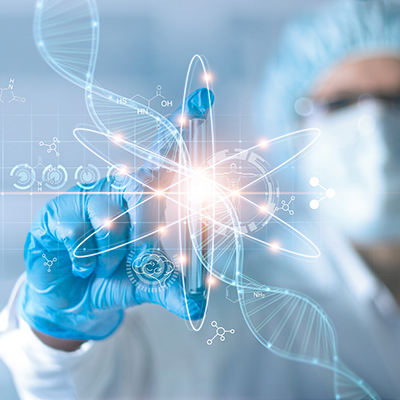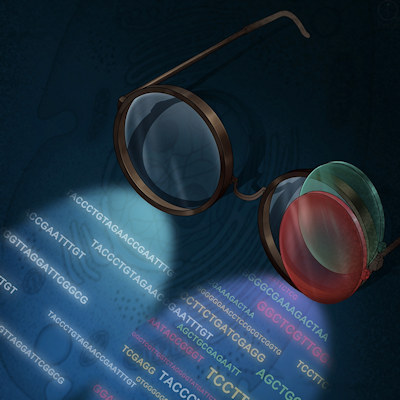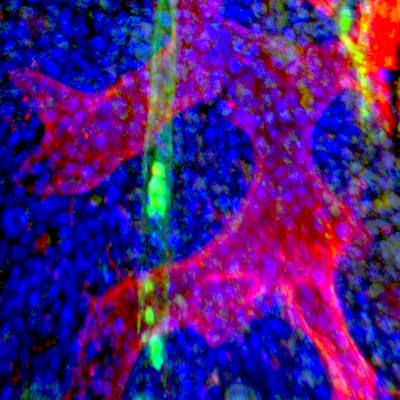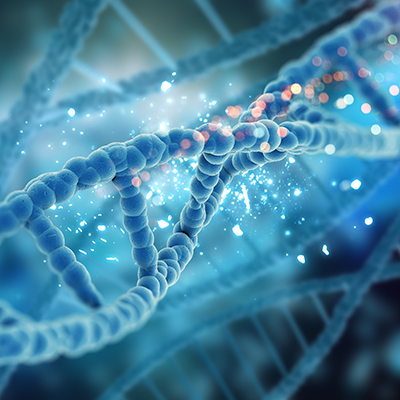April 28, 2021 -- An improved sequencing method, called nanorate sequencing (NanoSeq), allows for the study of genetic changes in human cells with unprecedented accuracy. The new technique, published in Nature on April 28, challenges the idea that cell division is the main mechanism driving genetic changes.
Somatic mutations occur in cells over time, resulting in the acquisition of around 15-40 mutations per year. Most of the genetic changes are harmless, but some can jumpstart cells on the path to cancer.
Because somatic mutations occur only in small groups of cells or even in single cells, studying these genetic changes has been challenging due to limitations in error rates of single-cell approaches.
"Detecting somatic mutations that are only present in one or a few cells is incredibly technically challenging," said Robert Osborne, PhD, an alumnus of the Wellcome Sanger Institute who led the development of the method, in a statement. "You have to find a single letter change among tens of millions of DNA letters and previous sequencing methods were simply not accurate enough. Because NanoSeq makes only a few errors per billion DNA letters, we are now able to accurately study somatic mutations in any tissue."
NanoSeq
Wellcome Sanger Institute researchers developed a sequencing protocol that enables the study of somatic mutations in any tissue or cell population by reliably detecting somatic mutations in single DNA molecules. They improved upon duplex consensus sequencing, which sequences both strands of a DNA molecule to remove sequencing and polymerase chain reaction (PCR) errors.
In practice, many errors occur due to library preparation artefacts and accumulate at the ends of DNA fragments. This limits the use of duplex sequencing for examining somatic mutations in individual DNA molecules.
The new method prevents copying errors between DNA strands by avoiding end repair and blocking nick extension, resulting in more clean DNA breaks. The researchers also used a robust bioinformatics pipeline to avoid false-positive mutation identification from the data, as well as to distinguish germline from somatic mutations.
Leveraging an extremely low error rate
They estimated a mutation rate of 52-109 mutations per cell in cells with less than 5 errors per billion base pairs when using NanoSeq. The authors reasoned that the extremely low error rate of NanoSeq enables the detection of somatic mutations in single DNA molecules from any tissue or cell population.
The team used this information to interrogate nondividing cells compared to stem cells. They wanted to determine the difference in mutation rates between stem cells and terminally differentiated cells and the rates and patterns of mutation in mature tissues.
Tissues contain both dividing and nondividing cells. Stem cells renew themselves and are responsible for supplying nondividing cells (terminally differentiated mature cells) to keep the body functioning. Stem cells produce large numbers of differentiated cells through extensive proliferation. Most cells are nondividing and divide only rarely. These cells include granulocytes in the blood, which number on the order of billions of short-lived cells, and neurons in the brain, which live for much longer.
Surprisingly, the data revealed remarkably similar mutation burdens in terminally differentiated cells and stem cells. This suggests that proliferation is not the primary cause of mutations. Similar mutation rates were observed in neurons and smooth muscle cells that infrequently divide.
"It is often assumed that cell division is the main factor in the occurrence of somatic mutations, with a greater number of divisions creating a greater number of mutations," said Federico Abascal, PhD, first author and a postdoctoral fellow at the Wellcome Sanger Institute. "But our analysis found that blood cells that had divided many times more than others featured the same rates and patterns of mutation. This changes how we think about mutagenesis and suggests that other biological mechanisms besides cell division are key."
The ability to accurately detect mutations in single molecules of DNA could be used to screen for mutations across the genome and in samples over time, without encountering limitations of single-cell analysis, according to the authors. This could lead to new areas of research in cancer and aging, to study drivers of pathogenic mutations in polyclonal samples, across tissues, and in many types of conditions. The tool can help scientists understand how lifestyle and environmental exposure to carcinogens actually lead to cancer.
"The application of NanoSeq on a small scale in this study has already led us to reconsider what we thought we knew about mutagenesis, which is exciting," said Inigo Martincorena, PhD, senior author and group leader at the Wellcome Sanger Institute. "NanoSeq will also make it easier, cheaper, and less invasive to study somatic mutation on a much larger scale. Rather than analyzing biopsies from small numbers of patients and only being able to look at stem cells or tumor tissue, now we can study samples from hundreds of patients and observe somatic mutations in any tissue."
Do you have a unique perspective on your research related to cancer research or genomics? Contact the editor today to learn more.
Copyright © 2021 scienceboard.net











